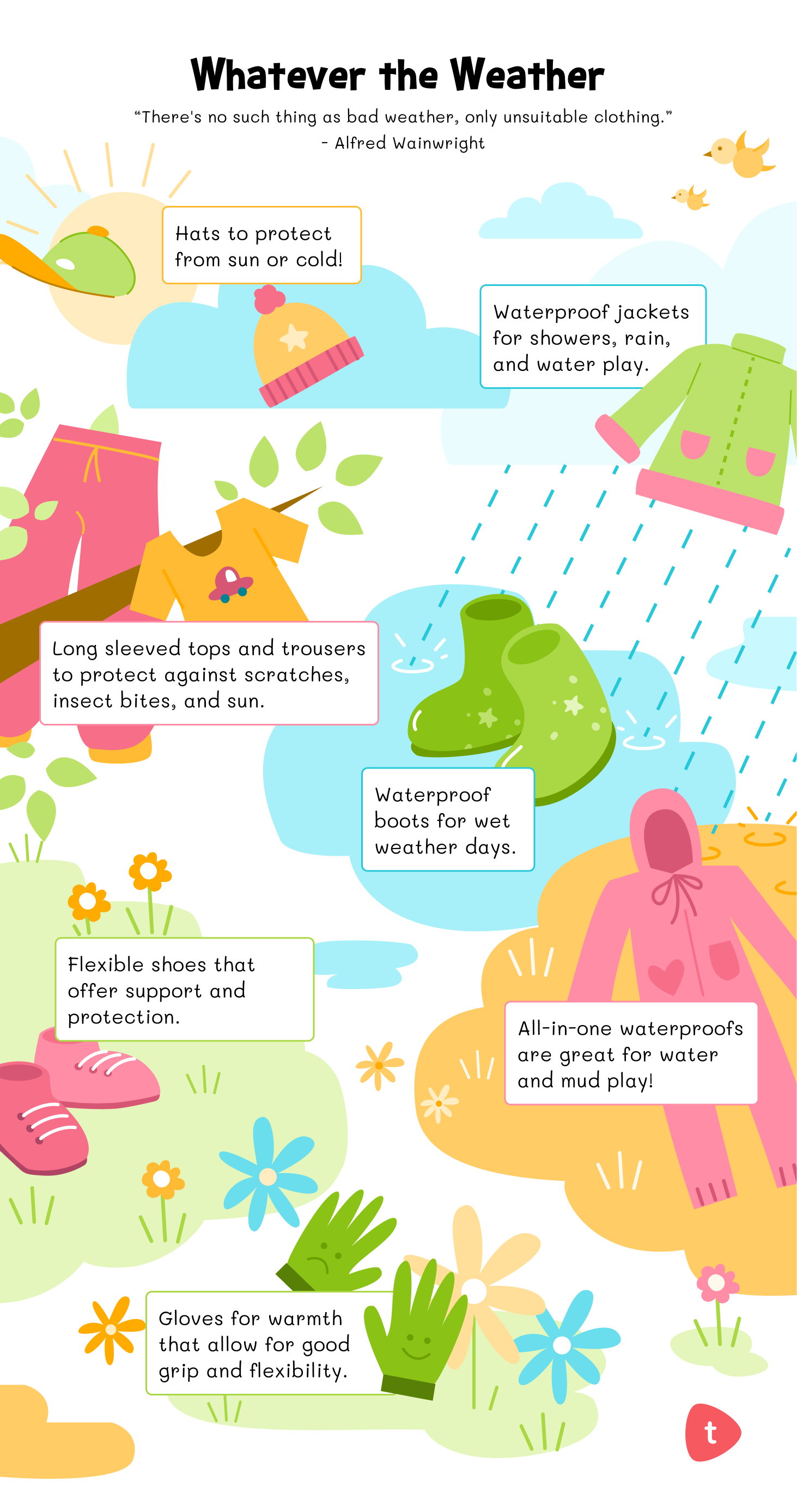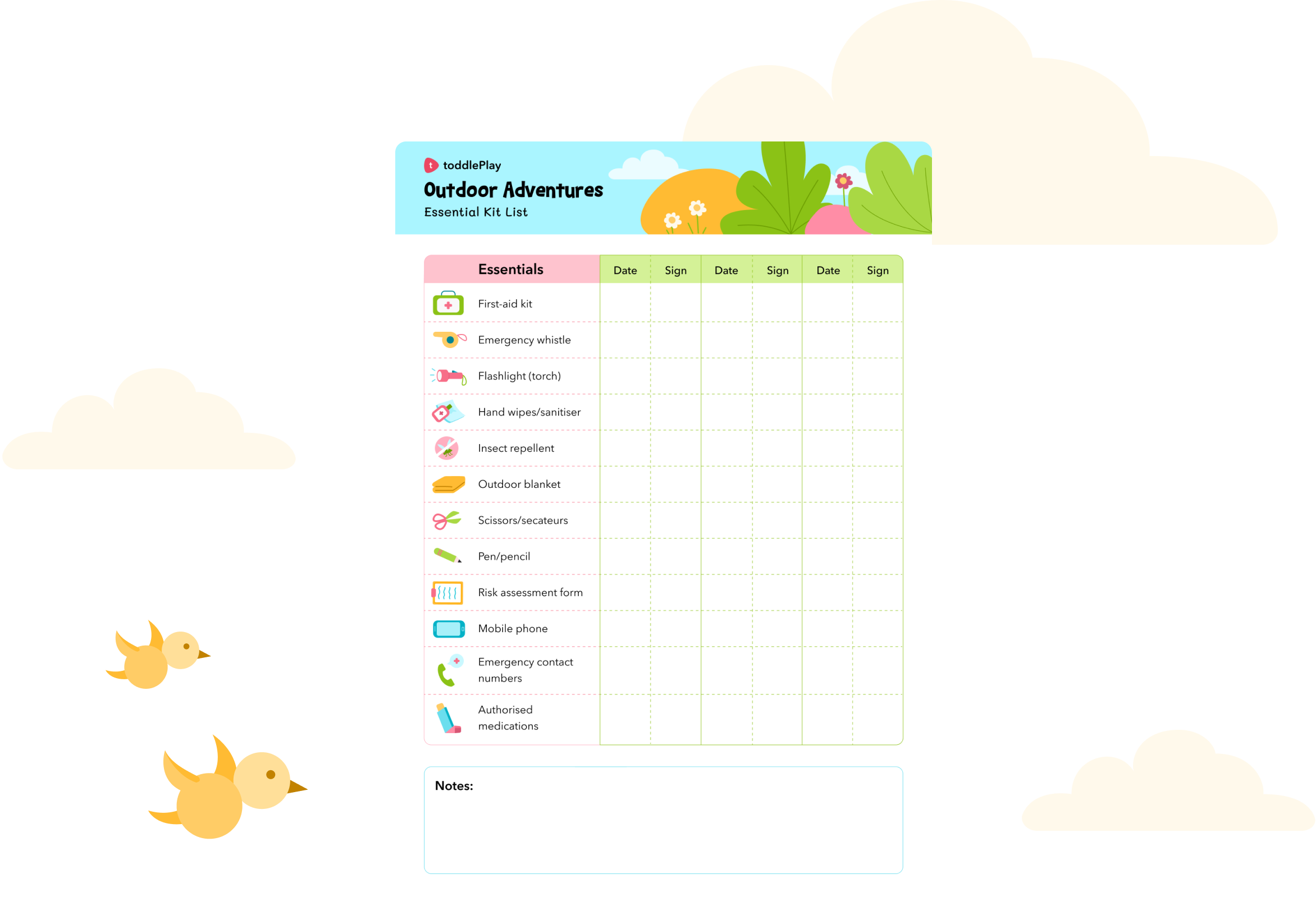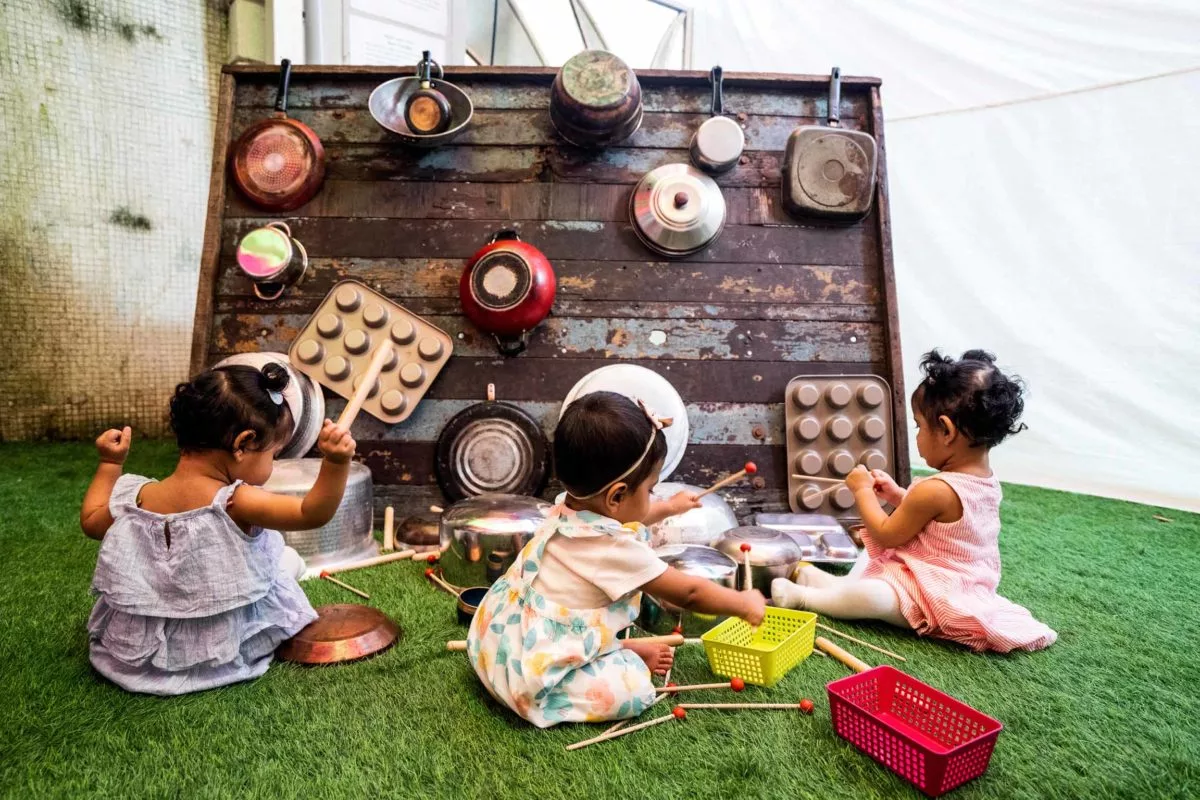“There’s no such thing as bad weather, only unsuitable clothing.”
– Alfred Wainwright
With the right clothes, any weather can be enjoyable. Consider your surroundings and potential hazards before heading out, but don’t let the weather stop you from having fun outdoors. Raindrops, breezes, and frost all offer opportunities for exploration and inquiry as children observe and learn about the natural world.
What you wear will depend on where you are in the world and the climate you experience, but here are some ideas to get you started:

Essential items for your outdoor kitbag
When you’re planning outdoor adventures, it’s always a good idea to be prepared for anything that might come your way. Even if you are right outside the school building, there are essentials that are helpful to have at hand! That’s where a kit bag (or ‘happy bag’) comes in! It’s basically a bag full of goodies that will make the children (and their families) feel a lot more comfortable and safe.
So, what should you pack in your kit bag? Well, first and foremost, you’ll want to make sure you have a first-aid kit with you, that is appropriate for the age of the children with you. This should include things like band-aids, bandages, antiseptic wipes, and any specific allergy medications you might need for individual children.
Bring your risk assessment forms so that these can be updated and added to as you continually monitor and assess the area and provisions. A flora and fauna identification chart is useful and encourages children to observe seasonal changes and growth that takes place. Add a pencil or pen to jot down anything new spotted that might require documentation or follow-up!
An emergency whistle is useful for alerting and gathering participants to one place. Don’t forget to practice using this before you go out so that children know what it sounds like and how to respond.
A flashlight is great for highlighting interesting minibeasts or natural items are spotted in shaded spaces – a great way to direct attention to a specific place or object!
Hand wipes or sanitisers are a must – especially if having snacks outside! Always remember to bag any trash and dispose of it properly too.
Insect repellent for areas with a lot of bugs. Although this should be applied before going outside, it is useful to bring extra in the kit. (Remember to have parent permission before applying.)
An outdoor blanket would be good to have – this can be used for sitting on, wrapping up a cold child, or even hanging to provide a shaded area on a sunny day! A small tarpaulin is also an easy thing to set up if you need to create a rain shelter.
Scissors or secateurs for cutting away any thorny branches – this helps minimise scratches on skin.
Remember, this list isn’t exhaustive and you should adjust it to suit your needs and the specific conditions of your trip. But with a well-stocked kit bag, you’ll be ready for anything!
It would be helpful to share this with your family community too. This will give confidence that their child is well-cared for and looked after when playing outside, and that the outdoors is a wonderful learning environment when carefully thought-out and intentionally planned!
How to use this resource:
- From bold gear to cozy layers, share the image with families to ensure children are dressed for the thrill
- Print the kitbag checklist and make it your trusty companion
- Tick off items to guarantee your supplies are locked and loaded











